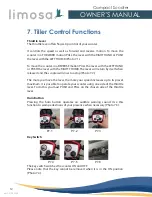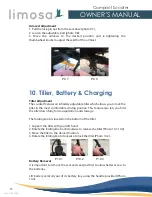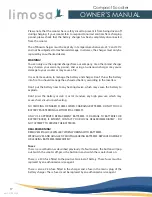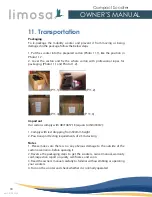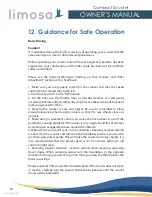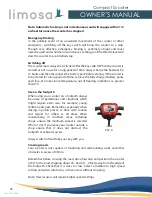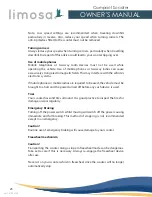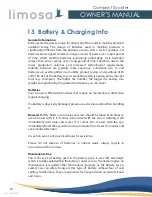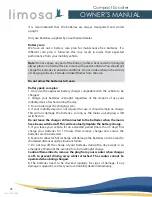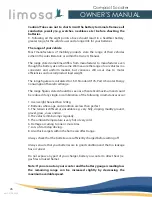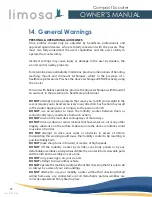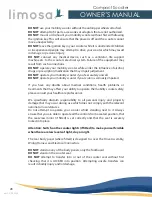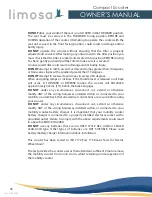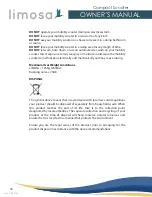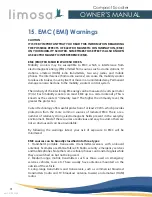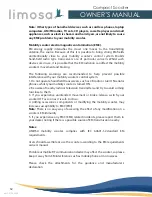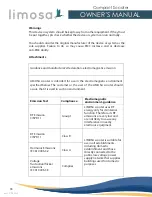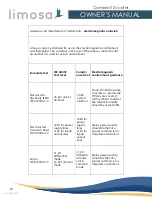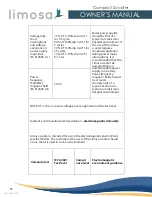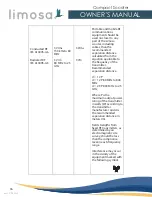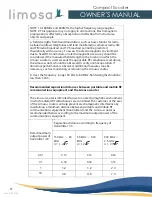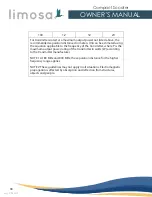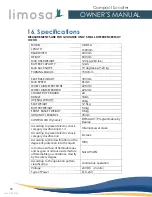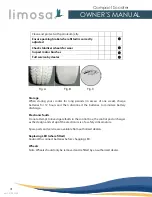
OWNER’S MANUAL
26
Compact Scooter
Caution! Take care not to short circuit the battery terminals. Remove all
conductive jewelry (e.g. watches, necklaces etc.) before checking the
batteries.
9. Following all the eight points above should result in a healthier battery,
greater range for the vehicle user and a longer life for your batteries.
The range of your vehicle
Most manufacturers of mobility products state the range of their vehicles
either in the sales literature or within the Owner’s Manual.
The range stated sometimes differs from manufacturer to manufacturer even
though the battery size is the same. We measure the range of our vehicles in a
consistent and uniform manner, but variances still occur due to motor
efficiencies and overall product load weight.
The range figures are calculated to I.S.O. Standard 7176, Part 4: Scooter Energy
Consumption Theoretical Range.
The range figures stated should be seen as a theoretical maximum and could
be reduced if any single, or combination, of the following circumstances occur:
1. User weight heavier than 120kg.
2. Batteries whose age and condition are less than perfect.
3. The terrain is difficult or unsuitable e.g. very hilly, sloping, muddy ground,
gravel, grass, snow and ice.
4. The vehicle climbs ramps regularly.
5. The ambient temperature is very hot or very cold.
6. Damage occurring to one or more tires.
7. Lots of start/stop driving.
8. Also thick carpets within the home can affect range.
Always check that the batteries are sufficiently charged before setting off.
Always ensure that your batteries are in good condition and that no leakage
has occurred.
Do not expose any part of your charger, battery or scooter to direct heat (i.e.
gas fires or naked flame).
Note: If you are out on your scooter and the battery gauge is reading low
the remaining range can be increased slightly by decreasing the
maximum available speed.
ver 2019.05.30E

